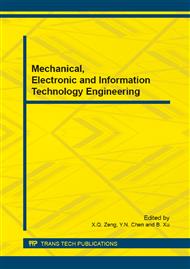p.748
p.753
p.758
p.765
p.774
p.783
p.787
p.792
p.796
Studies on the Technology and Application of Transit Signal Priority on Exclusive Line
Abstract:
Bus priority is the effective methods of reducing traffic jam in large and medium-sized cities. Application and assessment of bus signal priority is studied, bus signal priority whole scheme is put forward based on GPS pointing and intelligent dispatch by investigating the situation of No.36 bus waiting time at stops and intersections. Based on Zigbee active request bus signal priority, dataflow process under local request and central request is analyzed, the principle of bus signal priority on balanced distance headway is put forward, and adjustment of key features parameters realized combining with SCATS traffic signal control system. The application assessment shows that, there are average 651 priority requests and 286 priority buses every day, priority efficiency is 43.9%.The average speed of No.36 bus increased 15.8%, the delay time reduced 13.2%, the stopping times reduced 27%, the twice stop situation at intersections basically disappeared, average delay at each intersection increased 3%.
Info:
Periodical:
Pages:
774-779
Citation:
Online since:
March 2015
Authors:
Price:
Сopyright:
© 2015 Trans Tech Publications Ltd. All Rights Reserved
Share:
Citation:


